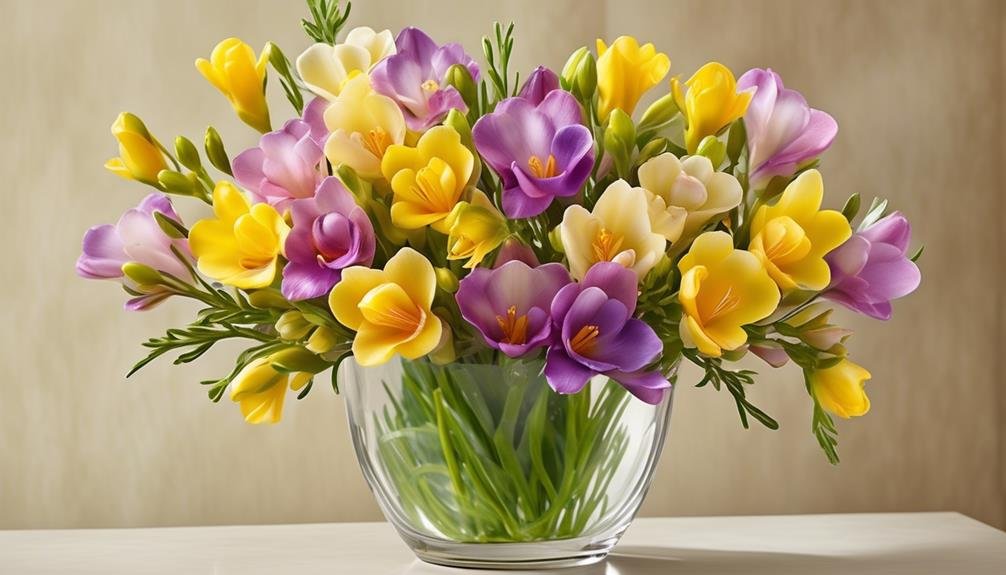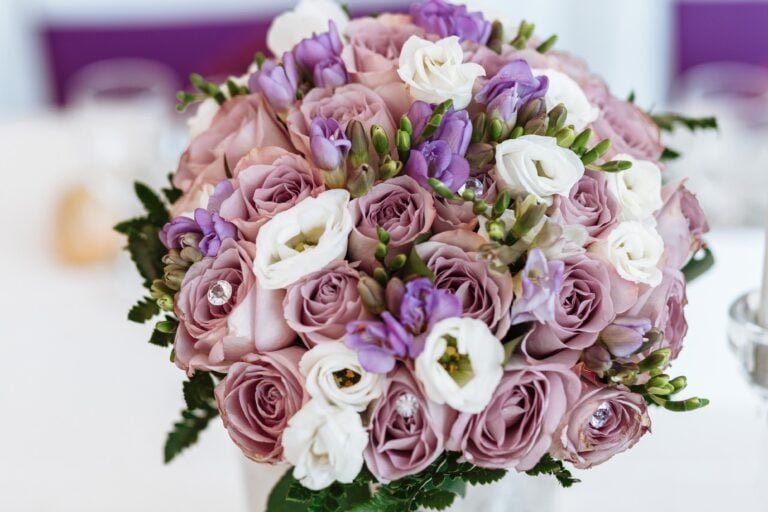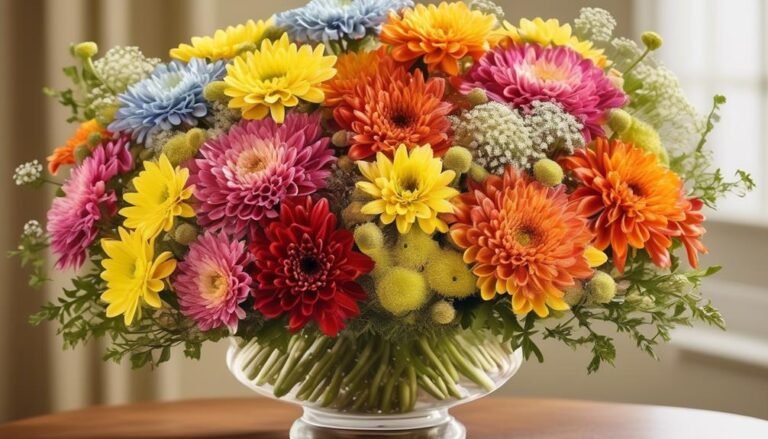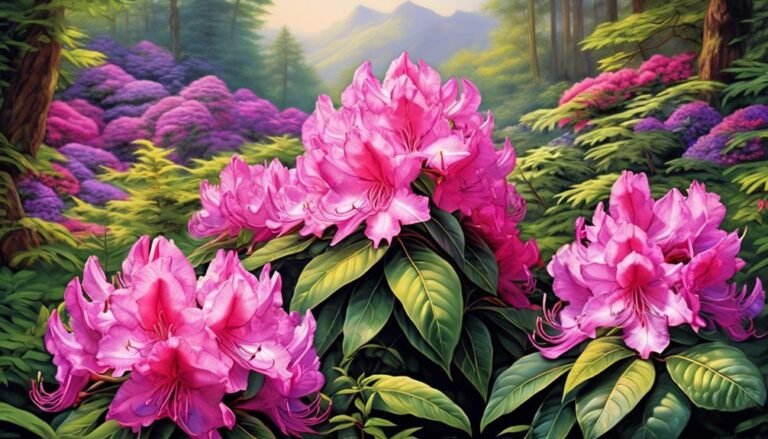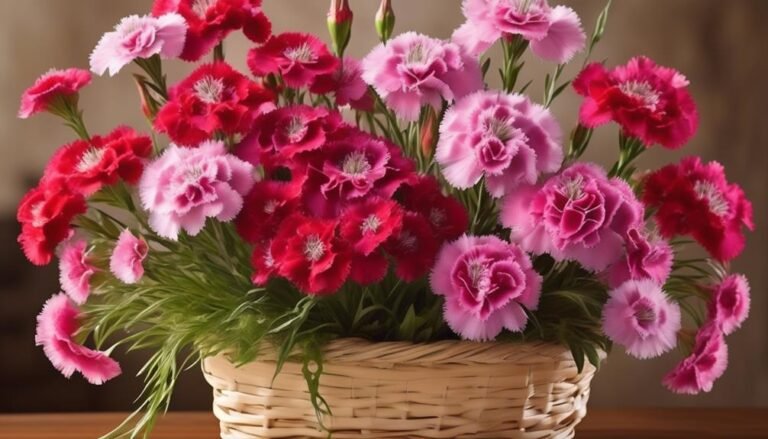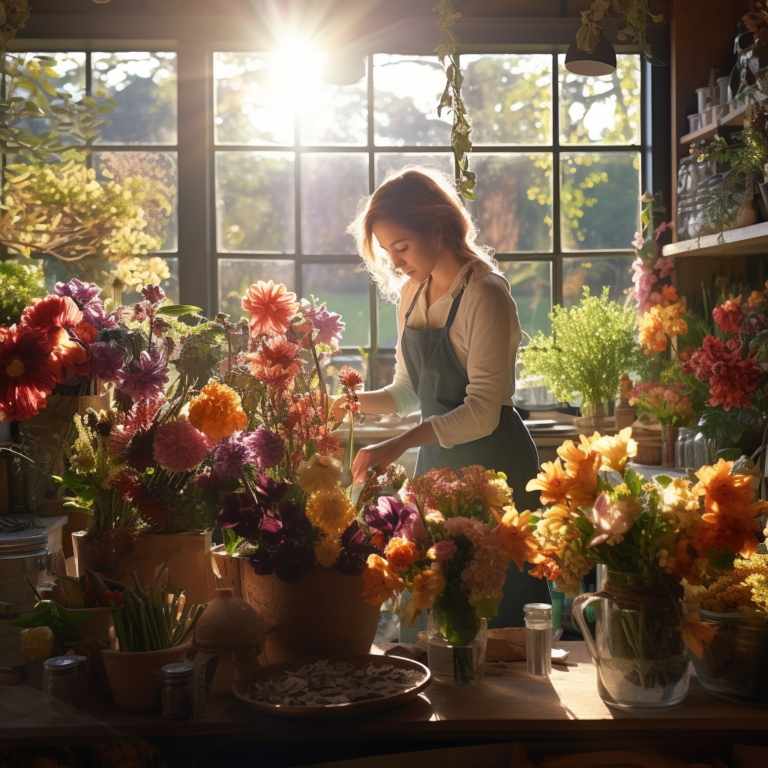Popular Types of Florist Flowers – Freesia
The Delicate Beauty of Freesia Flowers
Freesia flowers are known for their delicate, trumpet-shaped petals and captivating fragrance. These flowers have gained popularity among florists and flower enthusiasts for their elegant appearance and alluring scent. Let's explore what makes the freesia unique, including its scientific aspects, historical significance, and the wide range of varieties available.
Scientific Aspects of Freesia Flowers
Freesia flowers belong to the Iridaceae family and are native to South Africa. They are available in a spectrum of colors, including white, yellow, orange, pink, and purple. The flowers are known for their sweet and citrus-like fragrance, which adds to their appeal. Freesias are also popular for their long vase life, making them a favored choice for floral arrangements.
Historical Significance of Freesia Flowers
Freesias have a rich historical significance, dating back to their discovery in the 19th century by German botanist Christian Ecklon. The flower was named after Friedrich Heinrich Theodor Freese, a fellow botanist who played a significant role in its cultivation and propagation. Freesias have since become a symbol of friendship, trust, and innocence, often used in bouquets to convey heartfelt emotions.
Varieties of Freesia Flowers
There are numerous varieties of freesia flowers, each with its unique characteristics. Some popular varieties include single-flowered, double-flowered, and fragrant freesias, each offering a distinct visual appeal and fragrance. Additionally, hybrid varieties have been developed to enhance traits such as flower size, color, and scent, providing a diverse range of options for floral arrangements.
In conclusion, freesia flowers are cherished for their exquisite beauty, captivating fragrance, and rich history. Whether used in floral displays or given as gifts, freesias continue to enchant and delight with their timeless charm and elegance.
Scientific Name
Freesia, named after the German botanist Friedrich Heinrich Theodor Freese, belongs to the Iridaceae family. This family includes well-known plants like Iris, Crocus, and Gladiolus. There are 16 to 20 species of Freesia, each with unique characteristics and adaptations. The genus is known for its 300 hybrids, resulting in a wide variety of colors and sizes.
In terms of symbolism, Freesia is associated with friendship, innocence, and thoughtfulness. Its delicate and fragrant nature makes it popular for bouquets, especially for expressing appreciation and trust. It's also linked to the 7th wedding anniversary and is used in traditional wedding ceremonies in some cultures.
Understanding the scientific name and taxonomy of Freesia provides insight into its evolutionary history and genetic diversity, enriching our appreciation of its symbolic meanings and cultural significance.
Background History
Freesia, brought from South Africa to Europe in the mid-1800s by botanist Friedrich Heinrich Theodor Freese, has a rich cultural significance and is deeply rooted in symbolism across different cultures. In the Victorian era, it symbolized trust and innocence, making it a popular choice for bridal bouquets. In modern times, it represents friendship, thoughtfulness, and innocence. This cultural history has made Freesia a popular choice for various occasions, from weddings to anniversaries.
In South Africa, Freesia is often used in traditional wedding ceremonies to symbolize the trust and innocence between the newlyweds. In other cultures, it's a symbol of friendship and thoughtfulness, often given as a gesture of appreciation or to convey heartfelt emotions. This historical and cultural significance has contributed to the enduring popularity of Freesia as a cherished floral choice.
Physical Description

Freesia flowers are known for their distinctive silhouette and vibrant blossoms, making them a popular choice for various occasions. The flowers showcase a row of brilliant blossoms growing to one side, with each bloom reaching up to 1.5 inches in diameter. They typically have a funnel-shaped or tubular structure and exhibit a distinctive six-tepal structure, resembling six petals.
The inflorescence is sessile, with several flowers attaching separately to the same stem, creating a visually striking display. The plant is characterized by its cone-shaped corm, from which a fan of flat, spiky leaves emerges.
Freesia blooms come in a diverse array of colors, including pink, mauve, red, orange, gold, yellow, purple, white, and ivory. Moreover, these blossoms emit a strong citrusy-sweet fragrance, particularly notable in pink and red cultivars, enhancing their appeal for floral arrangements and bouquets.
Colours and Characteristics
Freesia flowers are known for their vibrant colors and unique funnel-shaped or tubular blossoms, making them a popular choice for floral arrangements. They come in a spectrum of colors, including pink, mauve, red, orange, gold, yellow, purple, white, and ivory. Their blossoms can reach up to 1.5 inches (24 cm) in diameter and have a six-tepal structure resembling six petals. Freesias also have a strong citrusy-sweet fragrance, particularly prominent in pink and red cultivars.
Cultivating freesias involves planting corms in well-draining soil and providing them with full sun or partial shade. The corms are usually planted in the fall for spring blooms. Due to their elegant and fragrant blooms, freesias are popularly used in floral arrangements, especially in wedding bouquets, corsages, and centerpieces. Their long, slender stems make them ideal for creating tall, graceful arrangements or adding a touch of color and fragrance to mixed floral displays.
In addition to their use in floral arrangements, freesias are also often used for perfumery and essential oil extraction due to their delightful scent. Understanding the colors and characteristics of freesia flowers is essential for both florists and enthusiasts looking to incorporate these charming blooms into their floral designs.
Varieties Available

Freesia flowers come in a range of captivating varieties, each with its own unique characteristics and visual appeal. Some popular Freesia varieties include those with zygomorphic inflorescences, featuring trumpet-shaped or funnel-shaped flowers in white and various light hues, known for their delicate appearance.
Additionally, specific varieties like B. stricta, F. alba, F. laxa, and F. laxa var. alba offer distinct features such as cup-shaped flowers, strongly perfumed funnel-shaped flowers, open star-shaped flowers in salmon pink to rose red, and unusually open salver-shaped flowers in pure white.
These varieties are sought after for their beauty, fragrance, and elegance, making them popular choices for floral arrangements and gardens.
Seasonal Availability
Freesias are most readily available during the spring and early summer months, with peak availability in April and May. They thrive in moderate temperatures, and their natural growth cycle aligns with this seasonal availability. However, they're also grown commercially throughout the year using controlled environments to ensure a consistent supply for flower delivery services. This cultivation technique allows for freesias to be available despite seasonal variations.
The availability of freesias may vary depending on the local climate and growing conditions, but they're generally seen in the market from late winter to early summer, with a wide range of colors available seasonally. Florists and online flower delivery services typically offer freesias during their peak season, making them more readily accessible during these months.
Freesias have different symbolic meanings in various cultures. For example, in some cultures, they symbolize trust and innocence, while in others, they represent friendship and thoughtfulness. Understanding the cultural symbolism of freesias can add an extra layer of meaning when choosing them for different occasions.
Care Tips
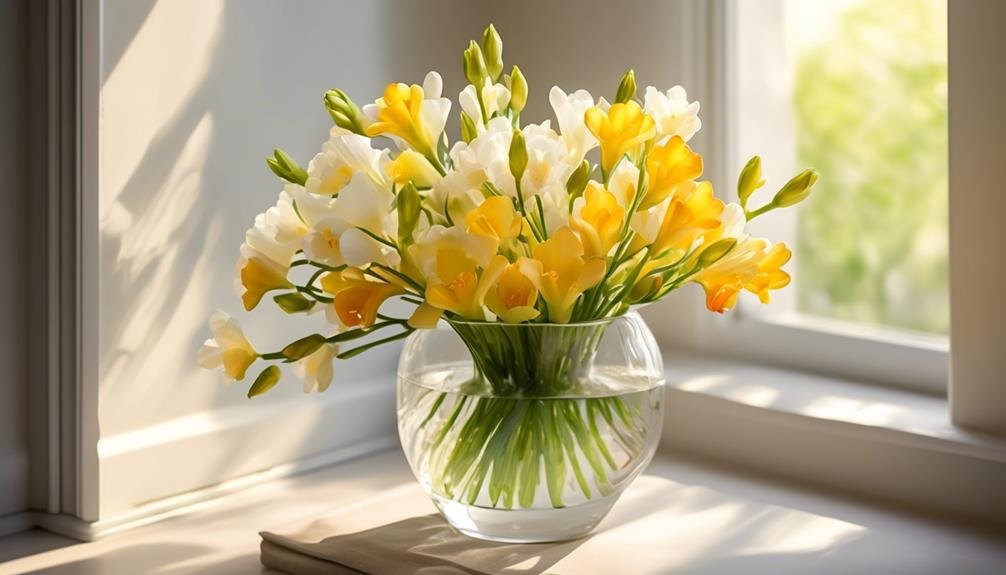
When caring for freesias, it's important to select straight stems with at least seven buds, making sure that only the first few are open to prolong their vase life. Use non-fluoridated water when preparing freesias, as fluoride can harm their longevity.
After choosing the freesias, recut the stems and place them in a hydrating solution with an anti-ethylene agent and a sugar-based preservative to keep them fresh. Use the freesias immediately after preparation to make the most of their relatively short vase life. Store them for no longer than three days at a temperature between 36-39°F (2-4°C) to maintain their freshness.
Avoid common freesia care mistakes, such as using fluoridated water, neglecting to trim the stems, or storing them at improper temperatures, as these can lead to wilting and reduced vase life.
What Makes Freesia a Popular Choice for Florists?
Freesia is a popular choice for florists due to its delicate and fragrant blooms. Its vibrant colors and elegant shape make it a popular calla lily florist flowers for wedding bouquets and arrangements. Additionally, its long vase life and versatility in floral designs make it a top choice for florists.
Conclusion
Freesias are a popular choice for florists due to their unique silhouette, vibrant colors, and strong citrusy-sweet fragrance. They come in a wide variety of colors and cultivars, making them highly prized for use in bouquets and arrangements for various occasions.
Freesias are a top-selling flower worldwide, thanks to their seasonal availability and care tips. Their physical characteristics make them a beautiful and eye-catching addition to any floral display. With their striking appearance and delightful scent, freesias are a must-have for any florist creating stunning arrangements.
